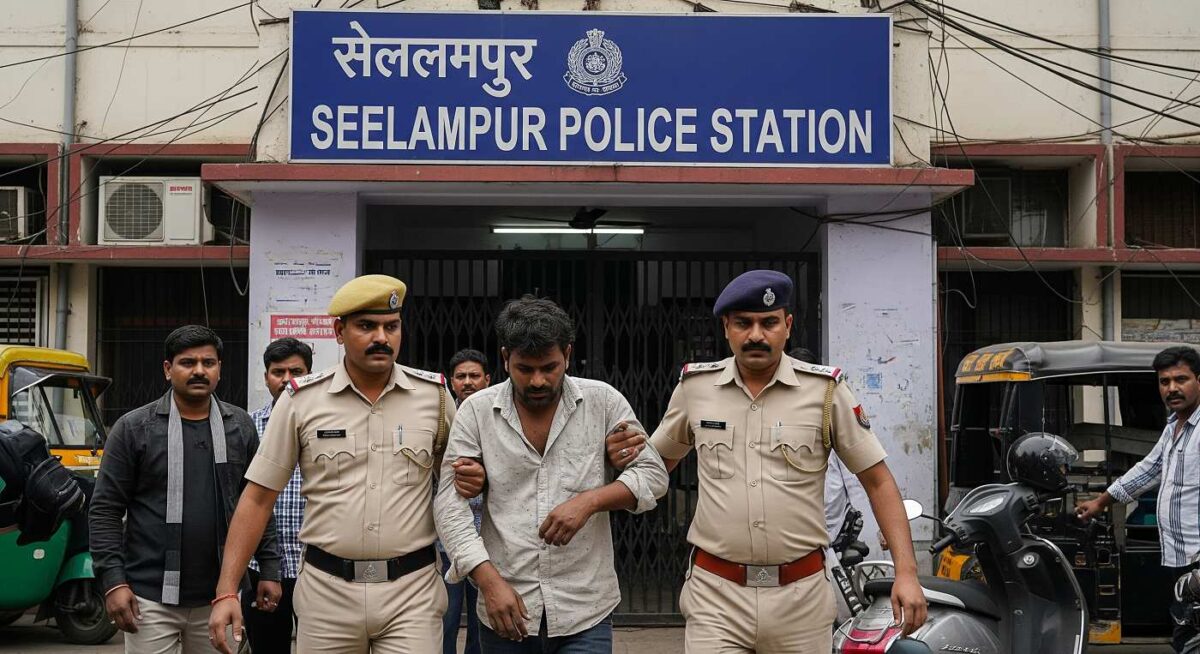On Sunday, August 17, 2025, a grave incident in northeast Delhi shocked residents when a man entered the Seelampur Police Station and admitted to killing his wife; soon after, a police team reached a nearby slum address, where a 24-year-old woman was found dead and the case intensified around the Seelampur murder confession.
What Happened: A Clear, Step-by-Step Timeline
- Confession at the station: The accused walked into Seelampur Police Station and informed officers that he had killed his wife.
- Immediate response: Acting on the disclosure, a police team proceeded to the location he provided in the Seelampur slum cluster.
- At the scene: Officers discovered the woman lying unresponsive inside a dwelling. The area was cordoned off to preserve evidence.
- Forensic processing: Forensic experts examined the spot, documented traces, and collected material evidence for laboratory analysis.
- Medical procedure: The body was shifted to a hospital for post-mortem to determine the precise cause and timing of death.
- Custody & case: The husband was detained/arrested; a murder case was registered; further interrogation and corroboration are in progress.
Where It Happened
The events center on Seelampur in northeast Delhi, a densely populated neighborhood with tightly packed lanes and informal housing. The victim was found inside a slum dwelling, which police secured for forensic examination to reconstruct the sequence of events.
What We Know About the Victim and Accused
- Victim: A 24-year-old woman, found deceased when police arrived. The post-mortem will clarify medical findings and help establish the exact cause of death.
- Accused: The husband, who presented himself at the police station and confessed. He is currently in custody while investigators verify his account, assess motive, and match statements with forensic and medical evidence.
Investigation Priorities
- Motive & timeline: Investigators are working to establish the trigger and the precise chronology inside the home.
- Forensics & autopsy: Results will be critical for confirming cause of death, estimating time of death, and aligning physical evidence with the confession.
- Witnesses & digital trails: Police are likely to examine neighbor statements, call records, and any available CCTV near the location to corroborate claims.
Community Impact & Safety Takeaways
Incidents like this highlight the importance of early intervention in domestic disputes. Families and neighbors should not hesitate to alert authorities if they notice escalating violence or coercive control. Key reminders:
- Report threats or violence immediately to local police or helplines.
- Encourage at-risk individuals to document incidents and seek medical and legal support.
- Community groups and resident welfare bodies can facilitate access to counseling and legal aid.
Legal & Next Steps
With a murder case registered, the matter now proceeds through standard criminal procedure: detailed statements, forensic and medical reports, and a case diary compiled for magisterial/judicial review. Any additional evidence—digital or physical—will be crucial to prosecution strategy and court proceedings.
Conclusion
The Seelampur case underscores the urgency of recognizing and responding to domestic violence before it turns fatal. As the investigation advances, the focus remains on truthful reconstruction of events, justice for the victim, and deterrence through swift, evidence-based legal action.









